Case Studies.
Add Case Study
Our Case Study database tracks 22,657 case studies in the global enterprise technology ecosystem.
Filters allow you to explore case studies quickly and efficiently.
Download Excel
Filters
-
(6,653)
- (2,601)
- (2,127)
- (945)
- View all
-
(5,642)
- (2,469)
- (1,692)
- (826)
- View all
-
(5,571)
- (2,178)
- (1,766)
- (643)
- View all
-
(5,247)
- (2,179)
- (1,715)
- (1,321)
- View all
-
(2,881)
- (1,448)
- (574)
- (376)
- View all
- View all 15 Technologies
- (1,985)
- (1,985)
- (1,915)
- (1,679)
- (1,629)
- View all 42 Industries
- (8,728)
- (4,742)
- (3,618)
- (3,233)
- (2,947)
- View all 13 Functional Areas
- (3,304)
- (2,787)
- (2,603)
- (2,006)
- (1,630)
- View all 129 Use Cases
- (13,581)
- (5,296)
- (4,272)
- (3,520)
- (2,856)
- View all 9 Services
- (504)
- (432)
- (416)
- (382)
- (301)
- View all 1083 Suppliers
Selected Filters

|
Albertsons' Seamless Omnichannel Shopping Experience for Over 30 Million Customers
Albertsons Companies, one of the largest grocers in the US, serves over 30 million customers each week through 19 different banners. The company faced the challenge of shifting customer demands and the need to provide a seamless shopping experience, whether in-store, online, or mobile. Albertsons' customer demographics varied greatly, and the company needed to meet the diverse demands of its customers. The company had multiple user IDs and passwords, which increased the attack surface of its IT infrastructure, making it more vulnerable to breaches. Albertsons needed to create a seamless, consistent IT experience in both the four-wall and no-wall environments, while maintaining the look-and-feel of the individual banners. The organization saw it as an opportunity to offer their customers a better experience.
|
|
|

|
Leveraging OpenText Exstream 16.2 in the Insurance Industry: A Case Study
The client, a large insurance company, had recently merged with another insurer. The merger necessitated the completion of an OpenText Exstream 16.2 migration project to transfer content assets from the subsidiary to StreamServe, the parent company’s Customer Communication Management (CCM) platform. The primary challenge was to ensure seamless cooperation with customers despite the necessary changes in their ERP tools. The client required a CCM solution that could integrate content assets from two different systems, HP Exstream and StreamServe, without any disruption to their operations.
|
|
|

|
Digitized Warehouse Operations for an Automobile Firm
The company's challenges are as follows;Manual errors in warehouse management.Problems such as inventory theft, delayed shipment, and the need for double verification of inventory
|
|
|
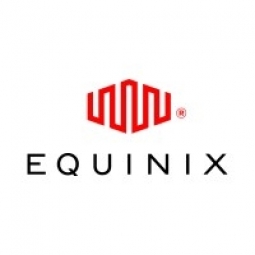
|
Global Media Service Provider Enhances Workflow and Collaboration with IoT
Avid Technology, Inc., a global SaaS media production solution provider, was faced with the challenge of enabling efficiencies and real-time collaboration across creative teams in the production process, without compromising performance or security. The company needed to deploy a cloud-based, global, online editorial suite to increase efficiencies in creating, editing, and enabling final production of media in a rapidly changing business landscape. The challenges also included capturing global customer access and scaling with quick deployment capabilities in a collaborative environment, connecting a diverse group of global users, ensuring high availability, optimizing application performance and usability by interconnection to a large number of global networks, and securing assets while allowing multiple contributors simultaneous access.
|
|
|
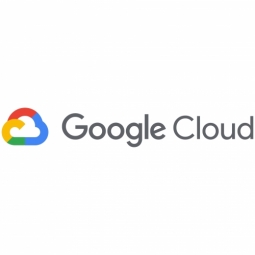
|
Auto Trader (UK): Enhancing Agility and Security in Automotive Marketplace with Istio and Google Cloud
Auto Trader (UK), the largest digital automotive marketplace in the United Kingdom, was facing challenges with its existing infrastructure. The company's infrastructure was previously deployed from its own data centers via a private cloud. The company wanted to improve its security and encryption, and create a more agile architecture to enable faster innovation. Auto Trader (UK) wanted to upgrade its security layers and implement mutual Transport Layer Security (mTLS) authentication between its apps. However, retrofitting these changes to its previous infrastructure would have been difficult due to the complexity of modifying hundreds of applications and building additional elements. The company also wanted to optimize its CPU allocation, which was previously uniform across all instances due to the inability to accurately measure the impact of changes.
|
|
|

|
Ayoconnect: Leveraging IoT to Deliver API-Powered Financial Products
Ayoconnect, a SaaS company based in Southeast Asia, aimed to provide an open finance platform for developers to deliver a range of financial products to their customers. However, the company faced challenges in launching the platform on a cloud environment due to regulations requiring Indonesians' financial and transactional data to stay within the country. The domestic cloud service provider they initially used could not fully meet Ayoconnect's requirements, leading to performance and stability issues. Furthermore, the company needed to transition from a business-to-consumer model to a business-to-business model, which required standardization and visibility to solve issues created by multiple infrastructure types and API formats across financial services.
|
|
|

|
Bci: Transforming banking with Google Workspace
Banco de Crédito e Inversiones (Bci), one of Chile’s largest banks, faced the challenge of meeting the changing expectations of its employees and customers who were increasingly comfortable using internet-based tools and services. The traditional ways of banking did not resonate with the younger workforce, particularly the millennials, and the bank needed to evolve to meet their changing expectations. The bank also aimed to get closer to its increasingly digitally engaged customer base. To do this, Bci decided it needed a digital transformation that would bring interactions between employees and with customers closer to their more intuitive digital experiences with consumer apps. The bank also needed greater support for working off-site, including finding ways to replace in-person and telephone meetings with simple, reliable videoconferencing. Bci also hoped to move beyond email as the means for sharing and document collaboration.
|
|
|

|
Alquería's Digital Transformation with Google Workspace
Alquería, a Colombian conglomerate of over 24 companies with more than 4,000 employees, faced significant challenges in integrating teams across different cities and locations into a collaborative environment. The company aimed to increase its digital employee base, further digitize its processes, enhance collaboration and productivity in internal processes, and improve security levels to reduce information leaks. The main obstacle to growth was identified as technological barriers, which needed to be broken with cloud solutions for the company to scale. The challenge was to incorporate tools that did not exceed the limit of what was possible, while efficiently allocating licenses and resources for each employee role.
|
|
|

|
ATB Financial: Reimagining Work and Enhancing Customer Experience with Google Workspace
ATB Financial, a crown corporation of the province of Alberta, operates in a highly competitive financial services space. To retain its competitive advantage, ATB launched a bold transformation initiative to reimagine the way banking products and services could be delivered. However, the company faced several challenges. Remote employees often experienced connectivity and performance issues with the corporate VPN, which limited their productivity. Legacy office tools did not foster innovation and often slowed business processes, delaying the company’s ability to deliver new services and respond to customer needs. The ATB banking operations team also struggled with workflows and lost files in public folders, a common issue with legacy office applications.
|
|
|

|
Bloomreach: Scaling for Peak Performance with Google Cloud
Bloomreach, a leading Commerce Experience Cloud, faced significant challenges as it grew rapidly since its launch in 2015. The company's growth began to strain its bare-metal IT infrastructure, affecting both development and stability. The company experienced server failures and poor connections with their data center provider, which threatened the reliability of their service. Furthermore, with the advent of GDPR regulations and a global client base, Bloomreach had to prepare for a more complex security environment. Their existing infrastructure was not capable of handling the upcoming challenges, and they needed a solution that could provide scalability, stability, and security.
|
|
|

|
Botify: Leveraging Google Cloud for Enhanced SEO and Revenue Growth
The global COVID-19 lockdowns during 2020 and 2021 accelerated the growth of online sales, leading to a 34% increase in e-commerce purchases in the U.S. alone. This surge in digital activity led brands across all industries to reassess their digital presence. As businesses look to maximize revenue from e-commerce, the global search engine optimization service market is expected to be worth more than $100 billion in 2025. Botify, an enterprise software company, faced the challenge of helping its customers drive sustainable traffic and increase online revenue in this rapidly evolving digital landscape. The company needed to analyze vast amounts of data, optimize websites for search engines, and provide actionable insights for website improvements.
|
|
|

|
Bounce: Enhancing Urban Mobility in India with Google Maps Platform
Bounce, a smart mobility solution in India, was faced with the challenge of making daily commutes stress-free, time-saving, reliable, and convenient for its users. The company, which operates a scooter sharing mobility app, needed a location solution that could scale rapidly and provide accurate location information to its growing customer base. The motorized scooter, being the best selling vehicle in South Asia, was the chosen mode of transport for Bounce. However, the company needed to guide users to the nearest available scooters, provide unmatched location accuracy and information, and quickly scale to serve a growing customer base of more than 2.1 million people. Bounce officially launched its mobility app in September 2018 in Bangalore, one of the largest cities in India with a metropolitan population of more than 10 million. The app was so popular and easy to use that within two years, it had spread to bustling Hyderabad and a host of other cities.
|
|
|

|
SeniorCare EMS Enhances Fleet Safety and Efficiency with Samsara Solutions
Before implementing Samsara, SeniorCare EMS faced significant challenges in monitoring and improving driver safety. They had separate vendors for dash cams, GPS tracking, and wireless data, which made it difficult to consolidate and manage data effectively. The existing dash cams couldn't remotely upload footage, making it nearly impossible to monitor driver behavior in real-time. Additionally, the GPS tracking system provided location data at intervals of 30 seconds to a minute, which was insufficient for emergency response times. The company needed a more integrated and real-time solution to ensure driver safety, reduce risky driving behaviors, and improve operational efficiency.
|
|
|

|
Telnyx enables reliable connectivity in COSMO smartwatches
COSMO, founded in 2020, embarked on a mission to help families stay digitally connected with their youngest members in a safe and meaningful manner. They achieved this through the development of the JrTrack 3 kids smartwatch, which combined communication functions like calling and texting with safety features such as 9-1-1 calling, geofencing, and unapproved call blocking. COSMO faced some technical hurdles as they developed their product. These included instances of patchy cellular coverage and inconsistent device connectivity, which directly impacted the reliability of their smartwatches. Such challenges posed a threat to the trust that parents placed in COSMO’s products, underscoring the need for a solution that could ensure steadfast reliability and uphold the company's commitment to their customers.
|
|
|

|
JPMorgan Chase & Co.'s Successful API Integration for Enhanced Project Management
JPMorgan Chase & Co., one of the oldest and most respected financial institutions in the United States, was facing a significant challenge in managing its active projects. The organization was using JIRA for their project management needs, but the limitations of the software's canned dashboards made it difficult to extract data in a manner that presented hierarchical information of all tickets in the queue. Due to JIRA server limitations, only a limited number of records from a given JIRA project could be pulled at one time. This lack of visibility into everyday tasks and the complexity of pulling data at a large scale was a significant issue for the organization. The challenge was to find a solution that could provide improved oversight into the organization’s active projects and automate the ideation and project creation phases of more than 10,000 projects over the past two years.
|
|
|
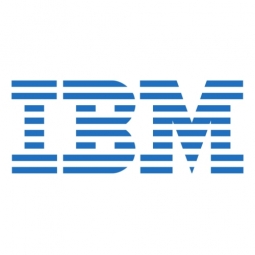
|
Operational Outsourcing: A Catalyst for Asahi Beverages' Business Growth
Asahi Beverages, a leading beverage company in Australia and New Zealand, faced a significant challenge when it acquired several Australian beverage businesses. The enlarged group needed to streamline and optimize operations even as further acquisitions joined the family. The company relied heavily on SAP solutions to manage its extended non-alcohol business processes, from manufacturing through to sales and distribution. However, with several new companies joining the group over the past few years, the Asahi Beverages team was keen to reduce system administration effort and maintenance costs. They wanted to use the savings to invest in new business applications and services. The challenge was to cut the number of IT incidents, accelerate the time for resolution of those incidents, and release valuable time for the technical teams to focus on innovation and business development.
|
|
|

|
Revamping Business Processes: Neon Buddha's Success Story with SweetProcess
Neon Buddha, a Canadian clothing brand, was struggling with the management of its business processes. The company's workflow involved several processes from idea conception to production and marketing, which were serviced by a myriad of standard operating procedures (SOPs). However, these SOPs were created in Word documents and Excel sheets, leading to disorganization and inefficiency. Employees had to scramble to find the information they needed for work, wasting valuable time and resources. The lack of a centralized, accessible system for managing SOPs was hindering the company's growth and diverting attention from the high-level creativity needed to excel in the competitive fashion industry.
|
|
|

|
Athenahealth's Transformation: Streamlining Patient Experience with IoT
Athenahealth, a healthcare technology company, was facing challenges with its legacy infrastructure as it expanded its patient and practitioner base. The company had multiple account credentials for patients, and each practice had to register patients and store their data separately. This led to a complex and disjointed user experience. Furthermore, the company was dealing with the challenge of ensuring data accessibility while maintaining robust security. The company needed a solution that would reduce friction, improve user experience, and enhance patient outcomes without compromising on security. The challenge was to find a solution that could handle the sensitive and highly regulated data that impacts people's lives, while providing a seamless digital experience for users.
|
|
|
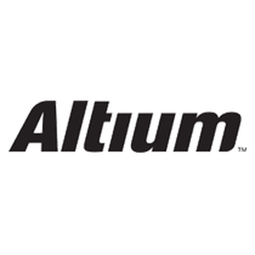
|
Ending Energy Poverty: Bboxx's IoT-Enabled Solar Power Solution
Energy poverty, defined as the lack of access to modern energy services, affects over 840 million people globally. An additional billion people are connected to unreliable power grids, leading to connectivity losses that negatively impact both public and private sectors. Bboxx, a next-generation utility company, aims to address this issue by manufacturing, distributing, and financing decentralized solar-powered systems in developing countries. However, the company faced challenges in developing hardware units that are compact, easy to use, and capable of transforming solar energy into raw power. The design process required multiple iterations and collaboration among various team members, including electrical and mechanical engineers.
|
|
|

|
ProRail's Transformation: Leveraging Low-Code Automation for Efficient Railway Operations
ProRail, a company assigned by the Dutch Government to maintain over 6,800 km of their national railway, faced a significant challenge in managing its complex operations. The company's mission was to ensure high-quality, safe, on-time, and convenient passenger and freight rail travel in the Netherlands. However, the logistical challenges were immense, requiring the company to maintain a high-quality workforce and systems. The company was organized into three infrastructure management organizations, each with its own set of responsibilities. The IT department was responsible for the processes that enabled the railway network to operate properly. However, the company's core systems operation was sophisticated and of high importance, requiring a substantial amount of IT oversight. At the same time, the business was constantly generating new ideas to create efficiencies in their processes, which often led to a growing backlog and a proliferation of Shadow IT.
|
|
|

|
Raiffeisen Bank Aval's Cloud Resource Alignment with Densify: A Case Study
Raiffeisen Bank Aval, one of the top five commercial banks in Ukraine, faced a significant challenge in modernizing their private cloud infrastructure. The bank was struggling with validating hardware requirements against purchase recommendations made by the hardware vendor. This resulted in an expected additional 33% in hardware costs for the transformation project. The existing cloud environment had a VM-to-host ratio of 24:1, and it consisted of 38 VMware hosts and 923 virtual machines. The bank needed a solution that would help them avoid these additional expenses and ensure that their private cloud resources were perfectly aligned to workload demand patterns and business cycles.
|
|
|

|
Scalability and Security Enhancement for UK Payment Services Provider with Nutanix Hybrid Cloud Technology
Pay360 by Capita, a major payment services provider, was facing challenges with its outsourced legacy infrastructure. The company's ability to deliver responsive, rapidly scalable, and highly available services was compromised due to the limitations of its existing IT infrastructure. The legacy 3-tier IT infrastructure was slow to scale, unreliable, and difficult to manage, which was affecting the company's ability to handle growing workloads, attract new customers, and exploit new cloud technologies. The situation was further complicated by the company's reliance on third parties to manage both the physical and virtual infrastructure, which hampered the technical team's ability to resolve availability problems quickly and identify bottlenecks. The company also experienced a major outage in 2017, which took them offline for over a day. A complete re-think of the Pay360 IT infrastructure was required, with a focus on scalability, performance, and ease of management, while also meeting the stringent security requirements of PCI compliance.
|
|
|
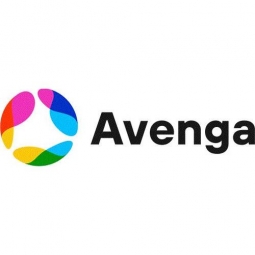
|
Migration from Legacy Tech to Fuel Business Productivity: A SharePoint Case Study
SharePoint, a global technology company, was faced with the challenge of modernizing their client's outdated solutions to enable new products, services, and revenue streams. The client, a technology leader with a 130-year-old history in manufacturing, utilities, infrastructure, and transportation, was driving the transformation of industries towards a more sustainable future. However, their existing solutions lacked scalability and proper performance, leading to poor business productivity and user experiences. The client's legacy IT landscape was composed of classic network drives and a Lotus Note-based email, and they had a complex multi-farm scenario, including SharePoint Online and on-premise. They needed an experienced and committed technology partner to support them with the migration and modernization of their dated solutions.
|
|
|

|
Align Technology's Transition to Heroku for Enhanced Consumer App Experience
Align Technology, a global medical device company, was facing challenges with its consumer-facing applications, including their corporate site and product sites. One of their key applications, the Invisalign Smile Assessment app, along with other applications, were used by thousands of consumers each month and required almost daily updates. These updates ranged from large iterations to minor changes on individual documents. The company found it increasingly difficult to perform these quick updates, a limitation that posed challenges not only for the business teams but also for their IT developers. The need for a more efficient and agile solution was evident.
|
|
|

|
Modernization of Legacy Systems for a Global Stock Image and Media Platform
The client, a leading global technology company offering a creative platform for selling and purchasing high-quality editorial and media resources, was facing challenges due to rapid business growth. The increase in new platform users, asset downloads, and corporate clients put a strain on their legacy systems used for tasks such as user management, customer service, and handling media purchases. These systems significantly slowed down the client’s operations and hindered their ability to effectively keep up with the business growth. The client needed to conduct a comprehensive modernization and optimization of a wide range of systems and applications.
|
|
|
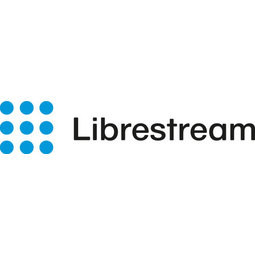
|
Hands-free Remote Assistance Revolutionizes Automotive Repair & Maintenance at Volvo Group Trucks
Volvo Group Trucks Central Europe, a distributor and service provider for Volvo Trucks and Renault Trucks in Germany, faced a significant challenge in training and supporting their geographically dispersed field technicians. These technicians frequently needed to be updated on the latest models and repair procedures. Experienced technicians also had undocumented repair procedures and best practices that needed to be transferred to new technicians. Any downtime in maintenance directly translated into a loss of business for Volvo's customers. The company had a limited number of Product Quality Engineers (PQEs) spread across various geographic locations. When repairing a truck, technicians often sought remote assistance from PQEs. However, using a tablet or smartphone for this purpose was inconvenient as technicians had to use their hands to hold the device during the remote assistance call, making it difficult to conduct repairs simultaneously.
|
|
|

|
Honeywell Enhances Data Quality and Efficiency with Locus Technologies
Honeywell, a Fortune 500 company specializing in diversified technology and manufacturing, was in need of an enterprise remediation data management system. The company sought a system that could safeguard and maintain the quality and integrity of their significant investment in generating site remediation data. They also wanted to ensure that this data was available for future use and could assure business partners of its reliable quality. Honeywell's existing data was scattered across stand-alone consultant systems, spreadsheets, and paper records, making it difficult to access and share within the company.
|
|
|
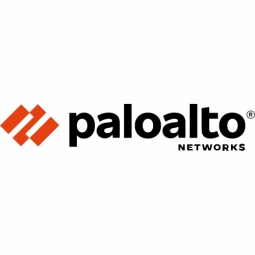
|
Yancey Bros. Co. Modernizes Infrastructure and Saves $150K with Prisma SD-WAN
Yancey Bros. Co., a Georgia-based company and the oldest Caterpillar® dealer in the US, was facing a challenge with its existing network infrastructure. The company had been using VeloCloud® SD-WAN bundled through its telco provider, but the expensive multiprotocol label switching (MPLS) connectivity was no longer a viable solution for its increasingly complex network. The company wanted to work with multiple partners who could provide flexibility, reliability, redundancy, and low-cost connectivity. Additionally, Yancey Bros. needed better visibility into network data to adjust policies and route appropriately. With over 30 remote sites and no technical employees at these sites, it was crucial for the centralized team of 12 to have real-time visibility into network traffic.
|
|
|

|
Cloud Solution Development for Vable: A Content Automation Platform
Vable, a UK-based content automation platform, was looking to expand its business beyond its niche market. The company's existing product was already serving its purpose within the legal sphere, but Vable wanted to reach a wider audience across various sectors including education, business, and healthcare. The challenge was to transform the idea of the existing on-premise product into a new cloud-based solution that would meet the needs of a broader audience. This required rethinking the business idea, designing a new software architecture, moving from a traditional backend monolith to microservices, and developing functionality that would meet customers’ expectations based on feedback from the users of the existing on-premise solution. Additionally, the team had to apply Amazon Web Services to develop cloud data services for the product and implement powerful search capabilities and advanced analytics of the content sent using Machine Learning, AI, and BI.
|
|
|

|
Greening PCBs with SODAQ and Altium: A Case Study
SODAQ, a Netherlands-based company, has been focusing on creating greener Printed Circuit Boards (PCBs) for over seven years. They design hardware and software for a variety of applications, including smart desks and bikes that measure air quality. Their first product, a solar-powered weather station, established them as pioneers in green technology. However, as their designs became more complex, integrating GPS tracking and solar power, they faced challenges. Designing complex PCBs with integrated solar panels required professional design tools. Their non-solar designs, like office desks that can track occupancy, featured custom applications that surpassed the limitations of most PCB design software tools. Managing components and design libraries with their old ECAD software was challenging, and collaboration between mechanical engineers and PCB designers was difficult.
|
|




